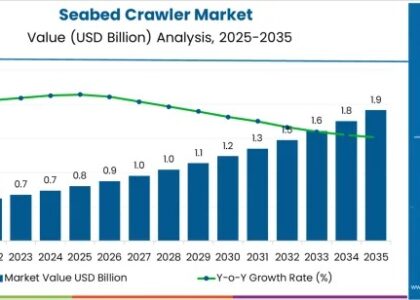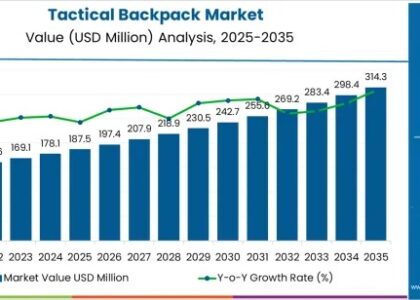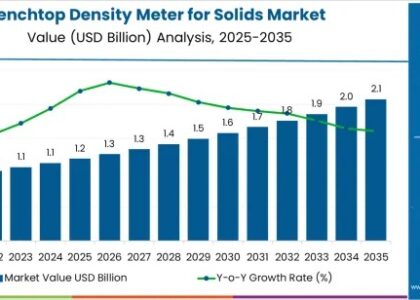
The global utility analytics and energy analytics market is set for transformative growth, with sales projected to rise from USD 3,881.93 million in 2025 to USD 15,500.99 million by 2035. This reflects an impressive compound annual growth rate (CAGR) of 14.9% during the forecast period. The adoption of advanced analytics across utility and energy sectors is rapidly increasing, driven by the urgent need for operational efficiency, predictive maintenance, real-time decision-making, and grid optimization. The shift toward renewable energy integration, digital grid modernization, and sustainability compliance is creating immense demand for analytics platforms that can deliver actionable insights from large and complex datasets. Utilities worldwide are leveraging analytics to monitor energy consumption, detect anomalies, optimize load distribution, and manage infrastructure assets more intelligently.
Energy providers are facing mounting pressure to decarbonize, digitize, and decentralize their operations, which has made analytics indispensable. With the growing penetration of distributed energy resources (DERs) such as solar, wind, and battery storage, energy networks are becoming more complex and dynamic. Utility analytics platforms are playing a pivotal role in navigating this complexity by offering grid operators tools for forecasting demand, managing load peaks, identifying faults, and improving energy delivery reliability. As the global energy transition accelerates, analytics is being recognized as a key enabler of resilient and adaptive energy systems.
Get Ahead with Our Report: Request Your Sample Now!
https://www.futuremarketinsights.com/reports/sample/rep-gb-232
Key Takeaways
The growth of the utility and energy analytics market is being fueled by the proliferation of smart meters, IoT sensors, and real-time data streams that require robust analytics tools to process, visualize, and interpret. Utilities are embracing data-driven strategies to enhance asset performance, reduce downtime, and improve customer satisfaction. Predictive analytics is helping in forecasting equipment failures, reducing operational costs, and extending asset lifespans. Energy retailers and distributors are also utilizing analytics to develop dynamic pricing models, personalize services, and optimize billing accuracy, resulting in better customer engagement and profitability.
Furthermore, the emphasis on energy conservation and carbon footprint reduction is encouraging utilities to analyze consumption patterns and develop energy efficiency programs tailored to consumer behavior. Governments and regulators are increasingly mandating transparent energy reporting and demand-side management, which necessitates the use of advanced analytics platforms capable of measuring and benchmarking performance across entire utility ecosystems. As a result, the adoption of analytics is extending beyond grid operations to include customer analytics, risk management, and energy trading optimization.
Emerging Trends in the Global Market
One of the most prominent trends in the utility and energy analytics market is the growing use of artificial intelligence and machine learning algorithms. These technologies enhance the accuracy of forecasts, automate anomaly detection, and enable adaptive grid management in response to dynamic inputs from weather data, energy demand, and market conditions. AI-powered analytics platforms are capable of processing vast volumes of real-time data to produce insights that support load balancing, outage prediction, and preventive maintenance with minimal human intervention.
Another significant trend is the convergence of edge computing and analytics, particularly for applications requiring immediate responses, such as grid fault detection or real-time voltage control. By processing data locally at the source, edge analytics reduce latency, improve reliability, and alleviate network bandwidth constraints. Cloud-native analytics platforms are also on the rise, offering scalability, remote accessibility, and integration with other enterprise systems. In addition, the push toward energy decentralization is encouraging the development of peer-to-peer energy trading systems powered by blockchain and supported by real-time analytics to ensure transaction transparency and efficiency.
Significant Developments and Market Opportunities
Global initiatives to modernize energy infrastructure and build smart cities are unlocking major opportunities for analytics providers. As utility networks expand to incorporate DERs, electric vehicles (EVs), microgrids, and smart appliances, there is a critical need for platforms that can orchestrate and optimize distributed assets. Utility companies are increasingly investing in integrated analytics ecosystems that span generation, transmission, distribution, and customer service. This holistic approach enables end-to-end visibility, agile decision-making, and proactive risk management across the utility value chain.
The emergence of sustainability reporting standards such as the Task Force on Climate-Related Financial Disclosures (TCFD) and Science Based Targets (SBTi) is also prompting utilities to adopt analytics tools capable of tracking emissions, energy savings, and renewable contributions. These tools are enabling utilities to quantify their environmental impact, assess performance against regulatory benchmarks, and communicate sustainability outcomes to stakeholders and investors. Additionally, rural electrification projects in developing regions are creating new demand for analytics platforms that help optimize limited energy resources and ensure equitable power distribution.
Recent Developments in the Market
Recent developments include the deployment of integrated energy analytics platforms by major utility companies aimed at enhancing grid visibility and customer responsiveness. Utilities are implementing centralized data lakes and AI-driven dashboards that consolidate data from smart meters, weather stations, DERs, and substations to generate actionable insights in real time. These developments are enabling faster incident response, improved grid stability, and better energy conservation strategies.
In parallel, vendors are launching sector-specific analytics solutions tailored to the needs of power generators, transmission system operators, and renewable energy providers. These solutions offer advanced forecasting, performance benchmarking, and compliance tracking features. Strategic partnerships between utility firms and technology providers are also becoming common, as firms seek to co-develop customized analytics solutions that align with their operational models and regulatory obligations.
Thorough Market Evaluation: Full Report
https://www.futuremarketinsights.com/reports/mea-cloud-integration-market
Competition Outlook
The utility and energy analytics market is witnessing intense competition among global technology firms, utility software providers, and data analytics startups. Market participants are differentiating themselves through AI capabilities, domain-specific expertise, data visualization tools, and integration flexibility with existing utility management systems. The ability to provide real-time, scalable, and secure analytics is emerging as a key competitive advantage, particularly for vendors targeting large-scale utility networks and government contracts.
Key players
Key players in the global utility analytics and energy analytics market include IBM Corporation, Oracle Corporation, SAP SE, Microsoft Corporation, Siemens AG, General Electric (GE) Digital, SAS Institute Inc., Schneider Electric SE, Hitachi Energy, and Teradata Corporation. These companies are actively expanding their solution portfolios to include real-time monitoring, predictive analytics, grid optimization, and energy forecasting. They are also investing in R&D and strategic alliances to strengthen their presence across emerging markets and support evolving regulatory requirements.
Key Segmentations
The market is segmented by component, application, deployment model, utility type, and region. By component, the segments include solutions and services, with solutions comprising software platforms and analytics tools. By application, key segments include grid optimization, load forecasting, asset management, renewable integration, energy efficiency, and customer analytics. Deployment models include on-premise and cloud-based solutions, with cloud adoption accelerating due to its scalability and cost efficiency. By utility type, the market is segmented into electricity, water, and gas utilities, with electricity accounting for the largest share due to the complexity of power systems. Geographically, North America and Europe are leading the market, but Asia Pacific, Latin America, and the Middle East & Africa are expected to witness faster growth due to infrastructure expansion and regulatory reforms.
About Future Market Insights (FMI)
Future Market Insights, Inc. (ESOMAR certified, recipient of the Stevie Award, and a member of the Greater New York Chamber of Commerce) offers profound insights into the driving factors that are boosting demand in the market. FMI stands as the leading global provider of market intelligence, advisory services, consulting, and events for the Packaging, Food and Beverage, Consumer Technology, Healthcare, Industrial, and Chemicals markets. With a vast team of 400 analysts worldwide, FMI provides global, regional, and local expertise on diverse domains and industry trends across more than 110 countries.
Contact Us:
Future Market Insights Inc.
Christiana Corporate, 200 Continental Drive,
Suite 401, Newark, Delaware – 19713, USA
T: +1-845-579-5705
For Sales Enquiries: sales@futuremarketinsights.com
Website: https://www.futuremarketinsights.com
LinkedIn| Twitter| Blogs | YouTube





